Architecture of Budapest, Central Hungary, Hungary
Unesco Sites in Budapest: Budapest; including the Banks of the Danube, the Buda Castle Quarter, and Andrássy Avenue
Must-See Sites in Budapest: Buda Castle, Budapest Parliament, Chain Bridge, Andrássy Avenue
Overview
Modern-day Budapest is actually the culmination of two different cities, Buda and Pest. Not surprisingly, this is where we get that oh-so creative name, Budapest. Budapest, the capital of Hungary and the nation’s largest city, is full of Incredible art and architecture that has developed for thousands of years.
The city has a long and storied past dating from before the Roman Empire. Sadly, Budapest has seen plenty of hardships that have left a significant impact on the city’s architecture. Budapest was one of the most heavily damaged cities in Europe during WWII and also went through a period of relative stagnation while within the Soviet Sphere of Influence.
Today, however, Budapest is a booming metropolis, with some of the greatest architecture in Central Europe, rivaling nearby cities such as Vienna and Prague. I personally find Budapest to be extremely beautiful and unique architecturally. To me, it’s clear that the 19th and early 20th centuries were some of it’s greatest years, which showcase magnificent buildings that are sure to make any traveler admire this gem on the Danube.

Photo by Mmullie from Wikimedia Commons
Ancient Roman Architecture in Budapest
Historians know that Budapest was originally settled by Celtic Tribes long before the arrival of the Romans. However, there isn’t a ton of archeological evidence and almost no remaining structures from that time. It wasn’t until after the Roman conquest that ancient Budapest began to turn into a city. The Romans expanded throughout the region of modern-day Hungary for decades and established the city of Aquincum around the middle of the 1st century CE.
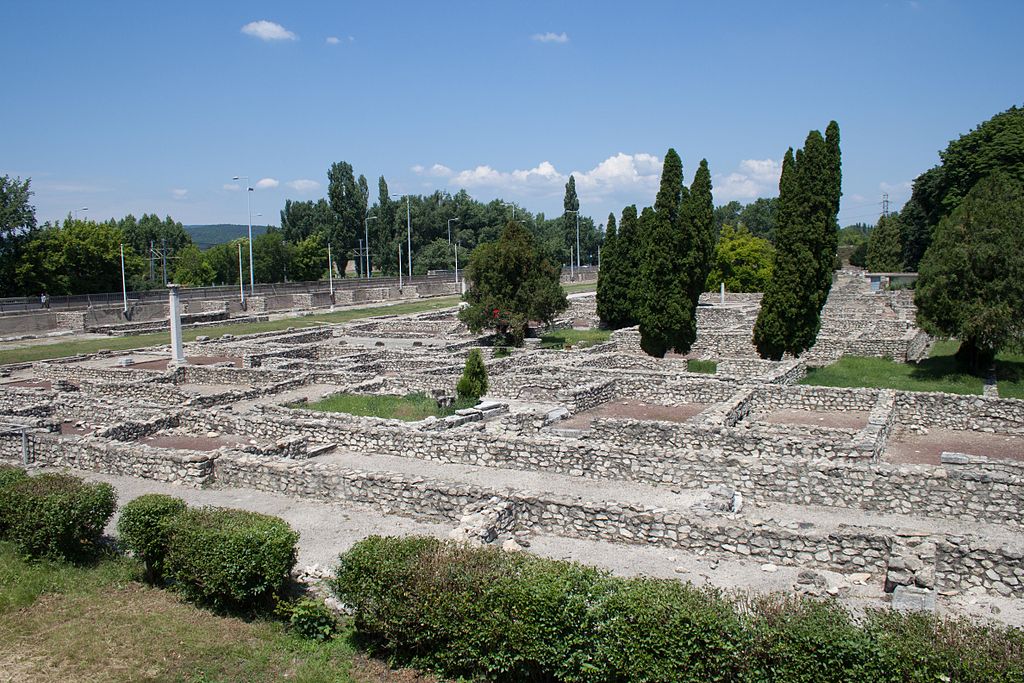
Throughout its history, Rome struggled to control the areas north of the Danube, and because of this, Aquincum became a heavily fortified town that was important in securing Rome’s unstable northern border. There is evidence that the Roman Army stationed thousands of soldiers within Aquincum, which was a catalyst for the growth of the settlement.
During the Roman Period, the use of Budapest’s natural hot springs became abundant. Budapest sits atop a large underground network of hot water, which was frequently tapped by the Roman settlers to provide water for Bathhouses, which is a tradition that remains in Budapest to this day. Today Budapest locals joke that you can drill anywhere and find hot water.
Today, some of Budapest’s oldest sites date from the Roman period. Nearly all of these ancient sites are located in the district of Óbuda. The Aquincum Museum located on the northern edge of Óbuda houses many artifacts dating from ancient Rome.
There is also an open-air portion of the museum, where visitors can walk through stone foundations from the ancient town. Nearby are two other notable Roman sites, the six remaining arches of the Aquincum Aqueduct, as well as the remnants of a Roman barracks which contains four fully intact Corinthian Columns along with other stone ruins.
Budapest’s most imposing Roman monument, which showcases the size and importance of Aquincum, is the Ancient Roman Amphitheater. This amphitheater was built to house more than 13,000 spectators and dates from the middle of the 2nd century. Like many other amphitheaters in Europe, the building was dismantled for its stones and bricks after the fall of the Roman Empire. However, there are still significant remains of the foundation and the original oval shape is clearly defined.
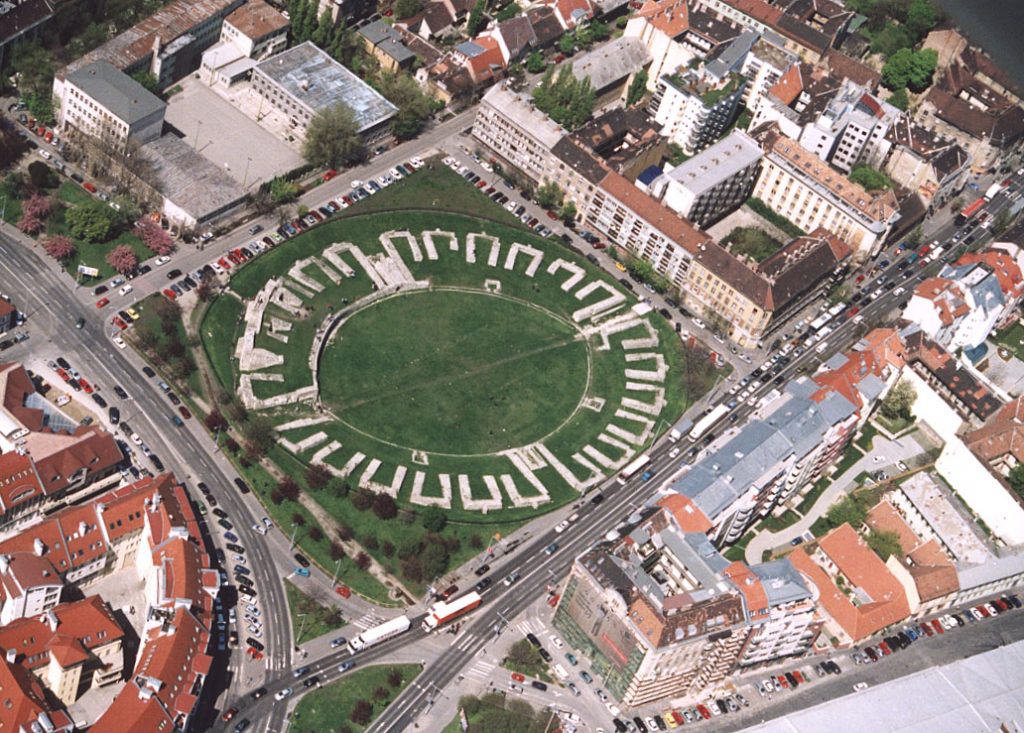
Photo by Civertan Grafik from Wikimedia Commons
Medieval Architecture in Budapest: The Domain of the Magyars and the Kingdom of Hungary
Roman Imperial dominance began to dwindle in the 4th and 5th centuries, leading to the eventual collapse of the empire. The outer territories were greatly affected, and the population of Aquincum fell drastically during this time period.
Without the large garrison of Roman Soldiers, there was nothing to protect the city from frequent raids by Germanic Tribes and other Eurasian Peoples. In the early 5th century, the region around ancient Budapest, as well as the entire Carpathian Basin, was controlled by the Hunnic Empire, under Attila the Hun.
During this time period from the 5th century until the 9th century, ancient Budapest was more of a small settlement, only a shadow of the former Roman city of Aquincum. This period is known throughout most of Europe as the Dark Ages, due to the lack of socio-economic development and technological advances. The entire region of Central and Eastern Europe entered a quiet period, which lead to nearly half a millennium without any significant architectural achievements.

Photo by Globetrotter19 from Wikimedia Commons
Eventually, a new group of nomadic settlers would call this region their home, they were known as the Magyars. In 896 CE the Magyars, lead by a man named Árpád, began expanding throughout central Europe. (remember that date, 896 CE)
Although they were still largely nomadic at this time, more permanent Magyar settlements began to be established under the reign of Árpád, which lead to him being known by many as, “The Father of Hungary.” These Magyars became notorious raiders during the 9th and 10th centuries, attacking various rival nations such as the Bulgarians, Franks, and Slavs.
In the year 1000 CE, the last Grand Prince of the Hungarians, Stephen I, became the first King of Hungary, after his coronation. He was crowned after the approval of both the Pope and Holy Roman Emperor. Stephen I then established the Kingdom of Hungary, which would be a Christian Kingdom, heavily connected with the Pope and Roman Catholicism.
This decision by their first king, completely effected the history and architecture of the Hungarian’s as they were henceforth Catholics and not Eastern Orthodox like many other nations in Eastern Europe.
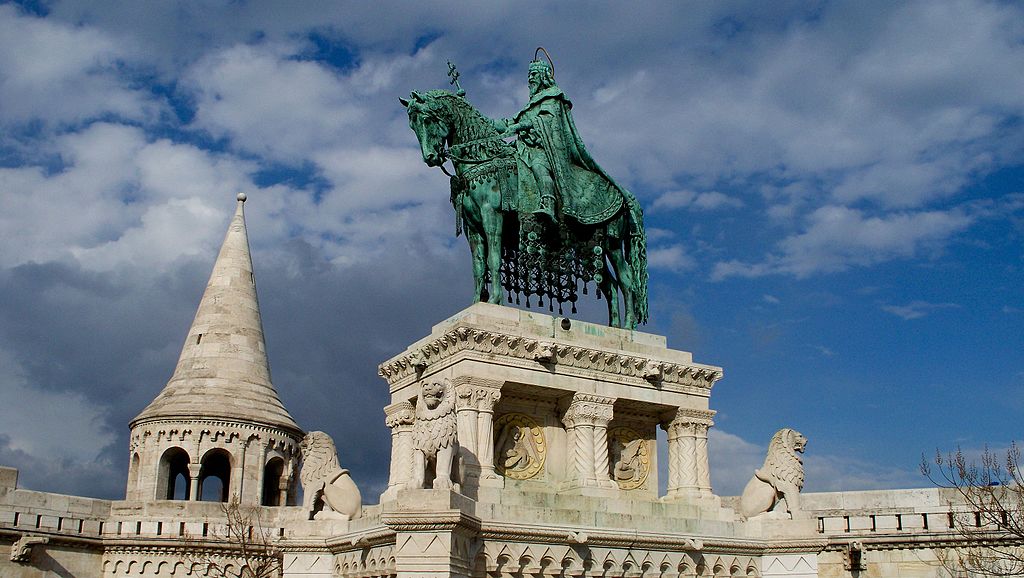
Photo by Merih Sezgin from Wikimedia Commons
The Kingdom of Hungary steadily grew for the next 200 years, although Budapest was still just a provincial city and not the capital of the kingdom. In the middle of the 13th century, Hungary suffered a devastating invasion by the Mongols, under the command of some of Genghis Kahn’s descendants.
The Magyars, once the region’s most notable raiders, were now becoming the raidees. The kingdom was severely weakened along with other neighboring states such as Poland and Bulgaria. Both Buda and Pest were heavily damaged, with the ladder being almost completely destroyed. As a result of this, the current King of Hungary Béla IV commissioned dozens of castles and forts throughout Hungary.
One of the most notable of these was the Buda Castle which was built atop an easy to defend hill overlooking the Danube River. This was the first rendition of Buda Castle, which would later be rebuilt in subsequent centuries. Today Buda Castle looks almost nothing like the original building, although there are newer reconstructions of the former fortifications on the south edge of the complex.
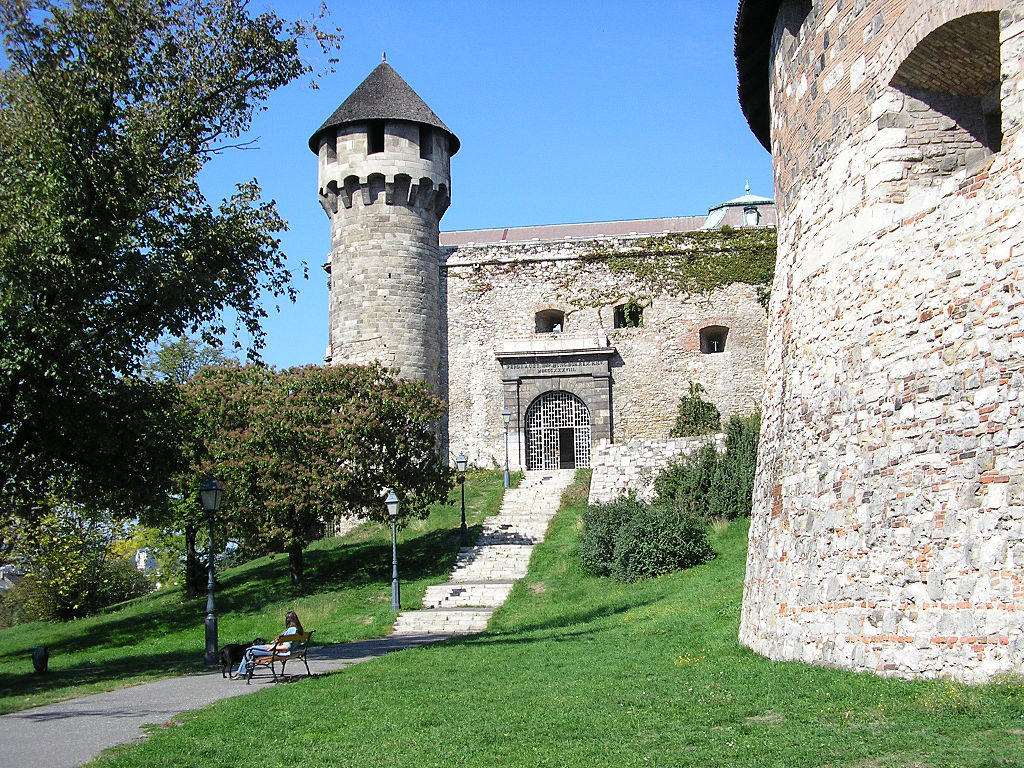
Over the following century, the area around Buda Castle grew into a prosperous fortified town, which eventually became the capital of Hungary in 1361. Although few of the features of Buda Castle are original, much of the fortifications around the castle hill date from the middle ages.
There is a ring of walls more than 2.3 miles (3.7 kilometers) in length, that enclose more than 80 acres (34 hectares) of land. Within these historic walls, stands the Church of Mary Magdalene, which for a time was the main gathering place within Buda. It was used for a few notable royal coronations. The church was heavily damaged in WWII and now only the bell tower remains.
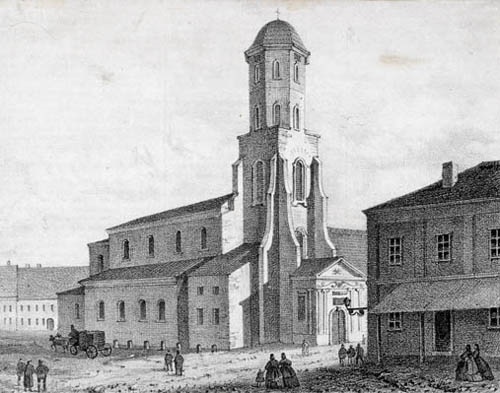
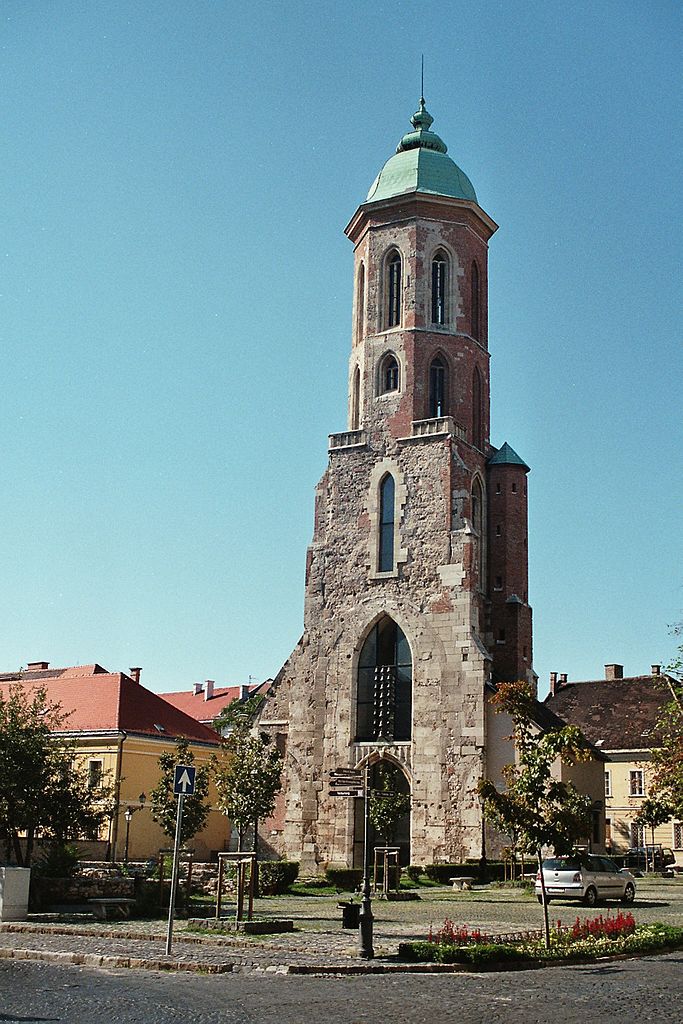
Photo by Unknown from Wikimedia Commons
Right, a modern-day photograph of the remaining bell tower from the church.
Photo by Dguendel from Wikimedia Commons
Just north of Buda Castle on the same hilltop stands the greatest work of architecture from the middle ages in Budapest, Matthias Church. The church stands on the location of an earlier church dating from the early 11th century, but much of the architecture dates from the late Gothic period in the 14th century.
Matthias church may be the best example of Gothic Architecture in all of Hungary. The spires, pointed arches, and rose windows all merge together to create a typical Gothic edifice. A few portions of the building were modified in the 19th century such as the bell tower, roof tiles, and many of the interior frescoes, but thankfully all of these additions are done in the original style of the building so the entire church appears cohesive.
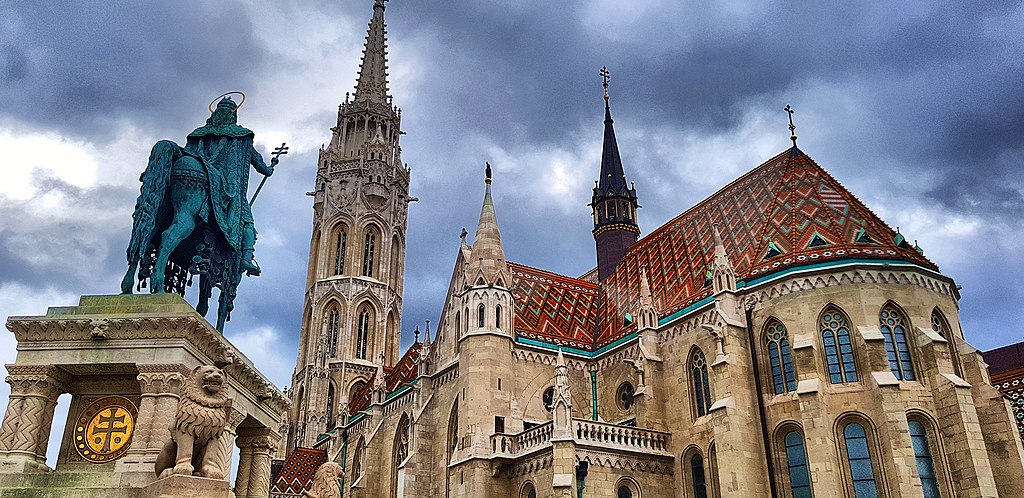
Photo by Nikolovskii from Wikimedia Commons
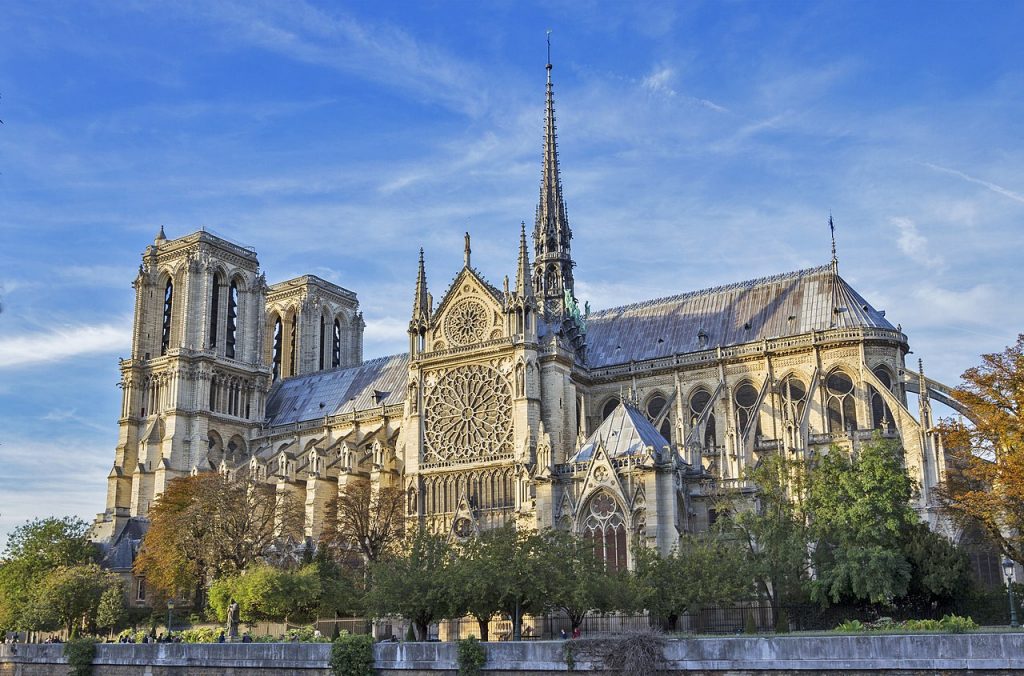
The Gothic Style was the most popular building style in Europe during the early middle ages, check out our article, “Gothic Architecture: The Top 25 Examples” to learn more!
Budapest became a key city for Renaissance Architecture during the 15th century. The Hungarian King at that time, Matthias Corvinus, married Beatrice of Naples in the second half of the 15th century. Together they commissioned several new works of architecture. Buda Castle in particular was heavily modified during the renaissance era.
This period was the second notable rendition of Buda Castle. The king and queen brought in architects and craftsmen from Italy to design the new royal residence. Particularly important was the Bibliotheca Corviniana, a library built within the castle which was known as one of the most important libraries in Renaissance Europe.

Photo from the United States Public Domain
Ottoman Architecture in Budapest
Although the cities of Buda and Pest were prosperous during the middle ages, not a lot of architecture from the medieval era remains. This in large part, is due to the conquest of the Ottoman Empire. In the first half of the 16th century, Budapest was besieged by the Ottoman Turks not once, not twice, but thrice! Each siege resulted in devastation for the city. Beginning in 1541, the Turks continuously ruled Budapest and the surrounding areas for nearly 150 years. During this time the population of Hungarians greatly dwindled, as they fled Eastward to Christian lands.

Photo by EtelkaCsilla from Wikimedia Commons
Much like in the other outer regions of the vast Ottoman Empire, Budapest did not see a lot of important building and infrastructure projects. Especially when compared to Istanbul and other cities within modern-day Turkey, the Ottoman’s largely neglected former Christian cities in Eastern Europe and the Balkans. However, Budapest wasn’t completely void of architectural innovations.
The Ottomans constructed several Turkish Baths or, Hammams. The Turks expanded on the usage of natural springs located beneath Budapest, a practice that dates from the Roman Period. Of these Hammams, two are still in use today, Rudas Baths and Király Baths. One other example of Ottoman architecture within Budapest is the small tomb and shrine dedicated to Gül Baba, a popular Islamic writer from the 16th century.
This tomb is located on the Buda side of the Danube and is a fantastic example of Ottoman architecture. The metal-clad dome sits on top of a perfect geometric octagon, hinting at some other notable works of Islamic Architecture, such as the Dome of the Rock in Jerusalem.
Baroque Architecture in Budapest: During Hapsburg Rule
The Ottoman Empire wanted to expand deeper into Europe and set their sites on Vienna. They were never able to succeed in taking the city despite several attempts. The ruling royal family in Vienna, the Hapsburgs, decided to go on the offensive and stage large-scale attacks on Ottoman-held Hungarian lands.
In 1686 a massive coalition of troops from various European nations besieged Budapest as part of a campaign to retake Hungary. The Ottomans set fire to Pest in an attempt to slow the advance of the Hapsburg forces. But eventually, after a long siege that lead to the destruction of much of Buda and almost all of Pest, the Ottoman garrison surrendered.
From 1686 onward, Buda and Pest were both within the control of the Habsburg Monarchy. The Hapsburgs got busy straight away removing several of the city’s mosques and minarets that were constructed by the Ottomans. They commissioned several large-scale projects to revitalize the city and return it to its former glory.

Photo from the US Public Domain
Buda Castle was a focal point of their reconstruction. By this time castle, architecture was becoming more and more obsolete, so the new building was built more like a palace than a castle. The new building was built in a Baroque Style and contained many gardens and rooms typical of a royal residence. This was the third major rendition of Buda Castle. The Sándor Palace, just north of Buda Castle, also dates from this period. It now serves as the royal residence for the President of Hungary.
The Hapsburgs also wished to reestablish Budapest as a Christian stronghold. Creating religious buildings was important to them since the city had spent so much time under Islamic rule.
During this time in the late 17th and 18th centuries, several of Budapest’s most important churches were built. They include University Church, Inner City Parish Church, and Saint Anne Parish Church. Most of these churches were built in a Baroque Style, matching many others that can be seen throughout the Hapsburg Realm from this time period.

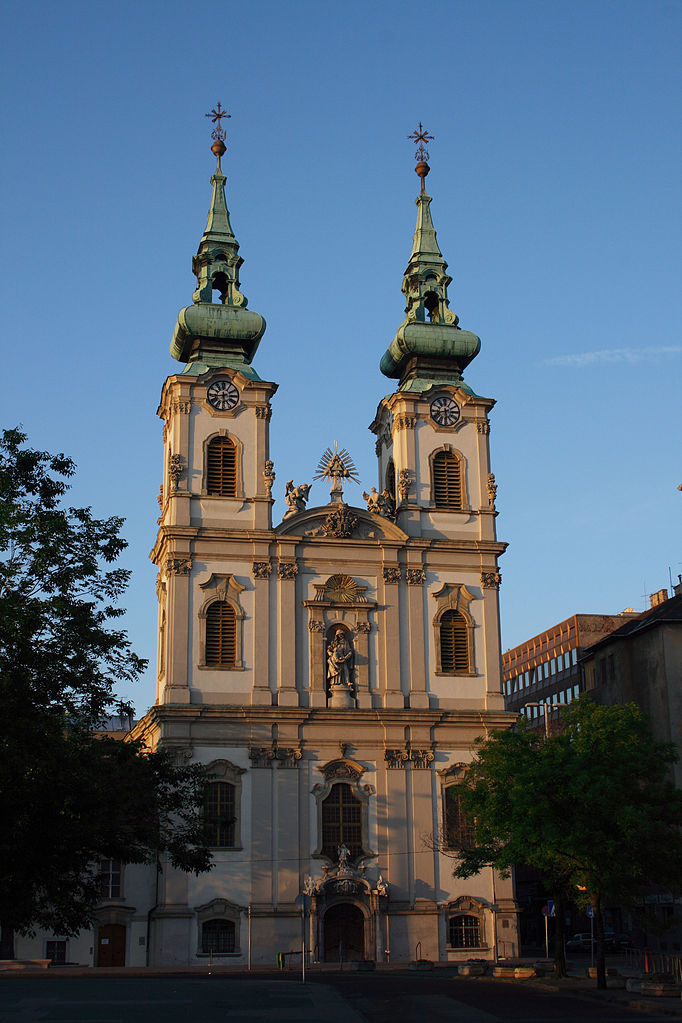
Photo by KovacsDaniel from Wikimedia Commons
Right, front elevation of Saint Anne Parish Church.
But during the rule of the Austrian Hapsburgs, Budapest and Hungary as a whole were not completely peaceful. The population of Hungary was constantly seeking more autonomy and independence from their rulers. There were several violent uprisings during the 18th and 19th centuries, the most notable of these being the Hungarian Revolution of 1848.
Unfortunately for the Hungarians, the revolutionist forces were defeated, although they did achieve many victories which helped their negotiating power in the following decades. The Hapsburgs wanted to reinforce their control on Budapest, and therefore began construction of a large military fortress atop of Gellért Hill.
Like Architecture of Cities? Sign up for our mailing list to get updates on our latest articles and other information related to Architectural History.
This is a great example of how architecture can be used in many ways, the Austrian Hapsburgs wanted to intimidate and show their strength in front of the local population of Budapest, what better way than with a massive fortress complete with cannons pointed right at the city below? This fortress is now known colloquially as Citadella and is a popular lookout point over the entire city.

Photo by Civertan from Wikimedia Commons
The most noteworthy work of architecture that was constructed during the reign of the Hapsburgs was the Széchenyi Chain Bridge. The bridge opened in 1849 and was the first permanent bridge connecting Buda and Pest. It would be one of the driving forces in the merger of the two cities. Today, Chain Bridge is one of Budapest’s most notable landmarks. It has become a symbol of the city and is visited by millions each year.

Photo by Dennis Jarvis from Wikimedia Commons
Budapest Architecture During the Austro-Hungarian Empire
Following the Hungarian Revolution of 1848, the Habsburg Austrians tightened their control over Hungary. The Hungarians were obviously angry about this and thus decided to achieve more freedoms through diplomacy. In 1867 after a series of negotiations, Hungary was elevated to the status of a sovereign kingdom, although still paired in many ways with Austria. After this, the two nations of Austria and Hungary merged to create the Austro-Hungarian Empire.
Finally, after 150 years of Ottoman control and 184 years of Habsburg control, Hungary and Budapest were finally able to govern themselves. This is where the architectural story of Budapest really starts to get interesting. Shortly after this in 1873 the three separate cities of Buda, Óbuda, and Pest were finally formally combined into the current city of Budapest.
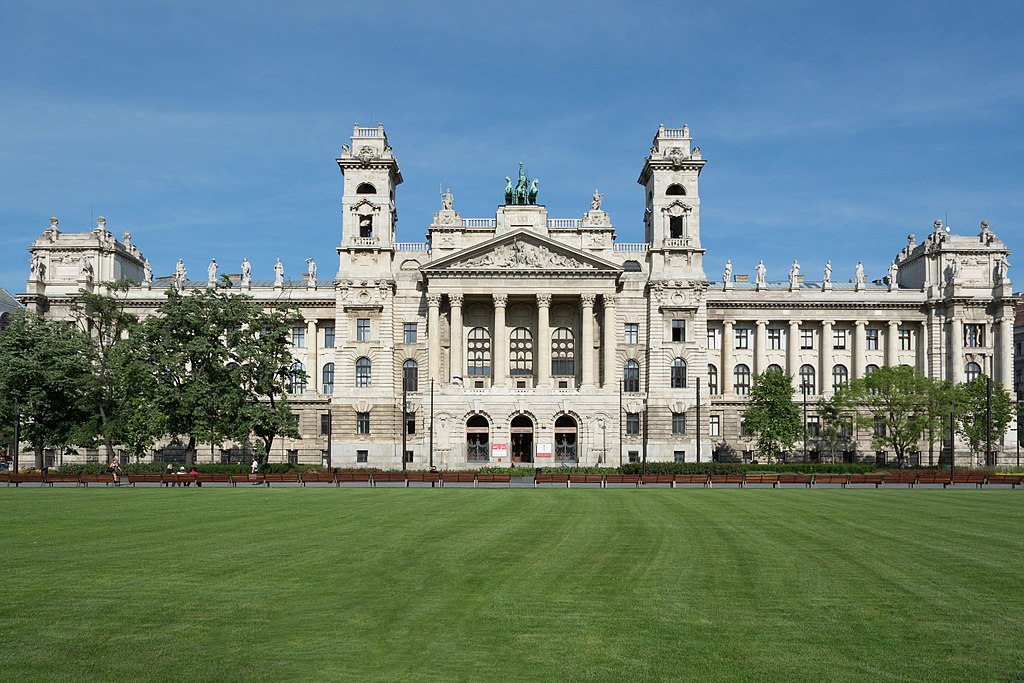
Photo by Nikolai Karaneschev from Wikimedia Commons
Economic and political reforms lead to a booming economy within the country. There was also a massive sense of optimism and national pride that consumed Budapest. This sense of pride and the strong economy is apparent in the architecture of the day. The Hungarian Government decided to throw the largest party that the country had ever seen.
The event would celebrate the 1,000th anniversary of the nomadic Magyars settling in Hungary in 896 CE under the command of Árpád. (I’m excited to see what the U.S. has planned for 2,776) This 1896 millennium celebration would signify the golden age of Budapest.
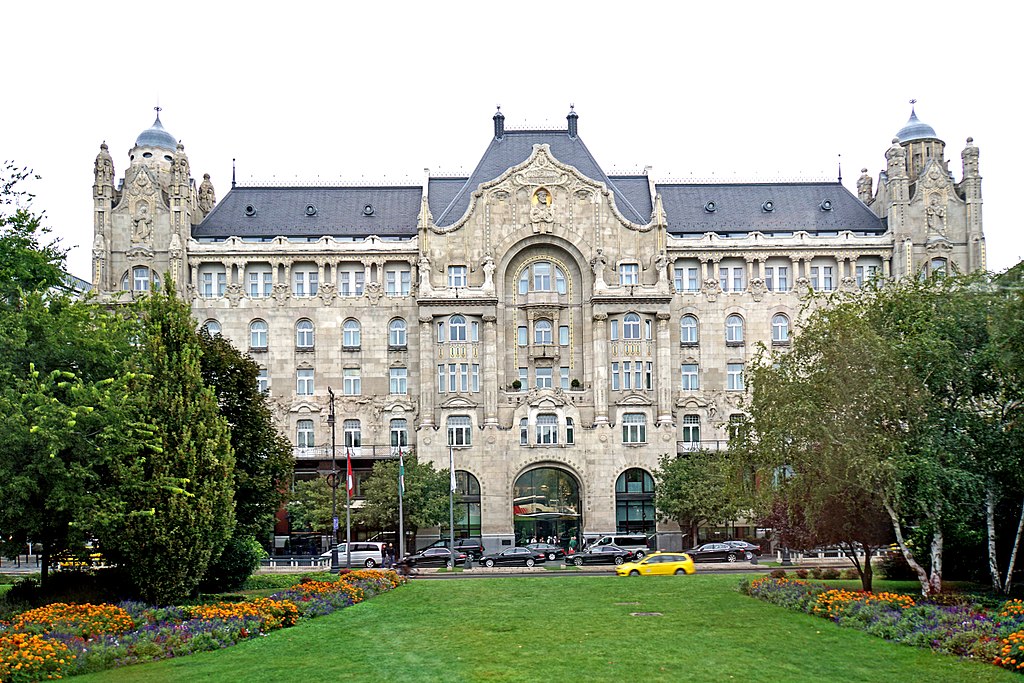
Photo by Dennis Jarvis from Wikimedia Commons
It would be nearly impossible to list all of the fantastic buildings and monuments that were constructed specifically for the millennium celebration. Some of the most notable are Gresham Palace, Central Market Hall, The Budapest Geological Museum, The Ethnographic Museum, The Museum of Applied Arts, and Szilágyi Dezsö Square Church.
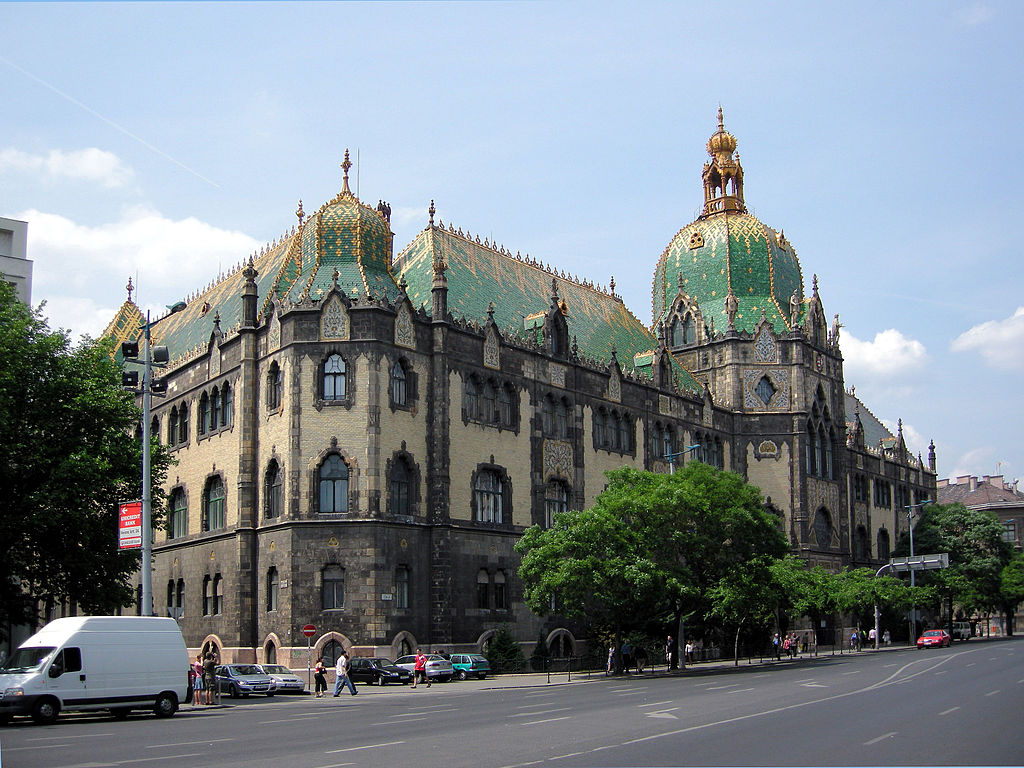
(and the award for best roof of all time goes too….)
My personal favorite building in all of Budapest was also built to commemorate the millennium celebration. The Hungarian Parliament Building is one of the finest examples of Gothic Revival Architecture in the world. The building, which is loosely based on the parliament building in London, directly overlooks the banks of the Danube River.
The towering gothic spires and the central dome can be seen from all over the city. Today the building serves as the National Assembly of Hungary. The Hungarian Parliament Building was recently restored and today it looks just as good as the day it officially opened in 1902.
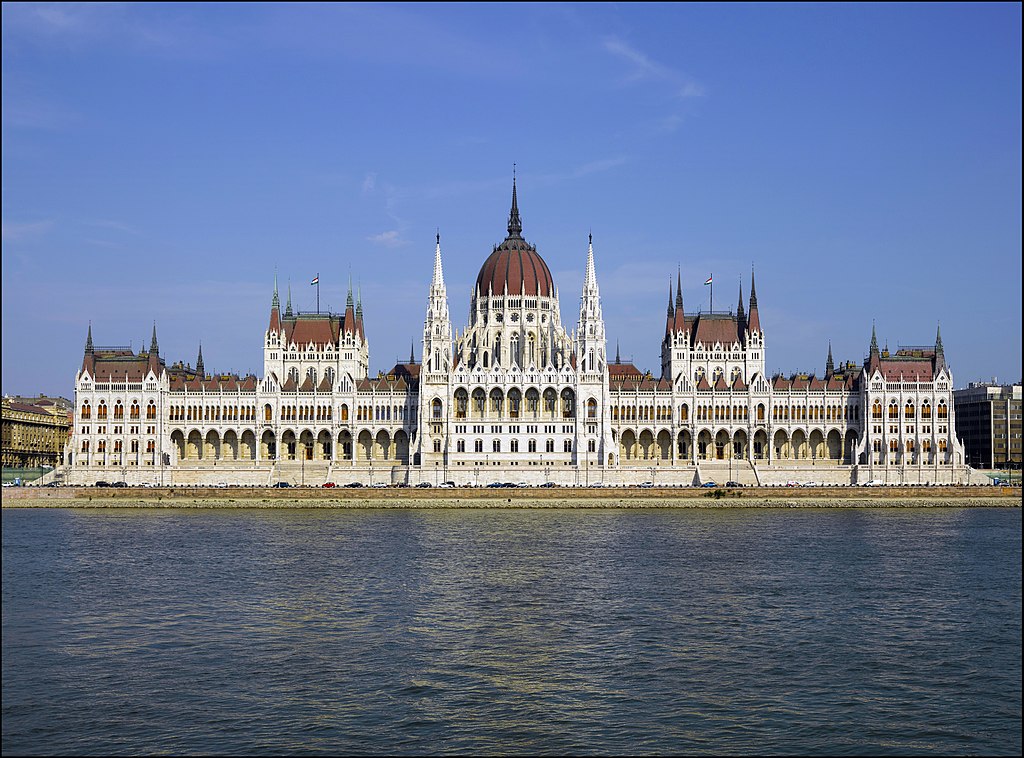
Photo by Godot13 from Wikimedia Commons
Massive changes were also made to Buda Castle and the surrounding area during the golden age of Budapest under the Austro-Hungarian Empire. The older Baroque Palace was altered and expanded. The Hungarians wanted to create a massive residence that would be larger and grander than that of their rivals in Vienna.
This was the fourth major rendition of the building. The new design of Buda Castle closely resembles the architecture that is seen today, although the building is not nearly as impressive as it once was thanks to damages during WWII.
Additionally, a massive stone staircase was built to connect the lower banks of the Danube with the top of the Buda Castle District. At the top of these monumental stairs, was a large stone castle-like structure, the Fisherman’s Bastion. Although not actually intended for defense, the Fisherman’s Bastion is a fanciful Romanticized version of a medieval fortification, built using Neo-Romanesque Architecture.
It is known to be a particularly photogenic attraction, that also provides great sweeping views of the rest of the city. For anyone that doesn’t want to scale the stairs all the way up to the castle hill, there is also a funicular that brings travelers up from the river banks below. The Buda Funicular was opened in 1870 and still functions to this day.
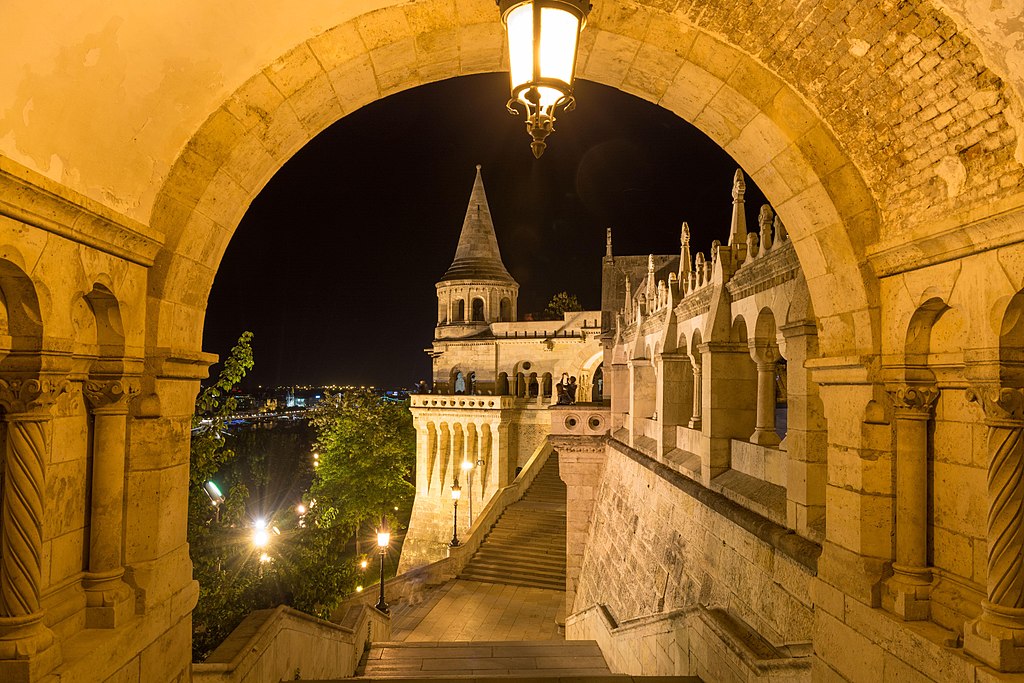
Photo by Nikolai Karaneschev from Wikimedia Commons
In addition to all of the government, museum, and institutional buildings that were being constructed, the rulers of Budapest also commissioned a large religious structure. St. Stephen’s Basilica, named for the first Christian King of Hungary, was completed in 1905. The Basilica is one of the largest churches in the entire nation.
The style of the building is Neoclassical which was a popular form of architecture in the late 19th century. Interestingly, the absolute top of the dome is 96 meters tall, matching the same height as the Budapest Parliament Building. The number 96 is extremely significant throughout Budapest architecture from this time period because of its connection with 896, the year that Hungary was first settled.
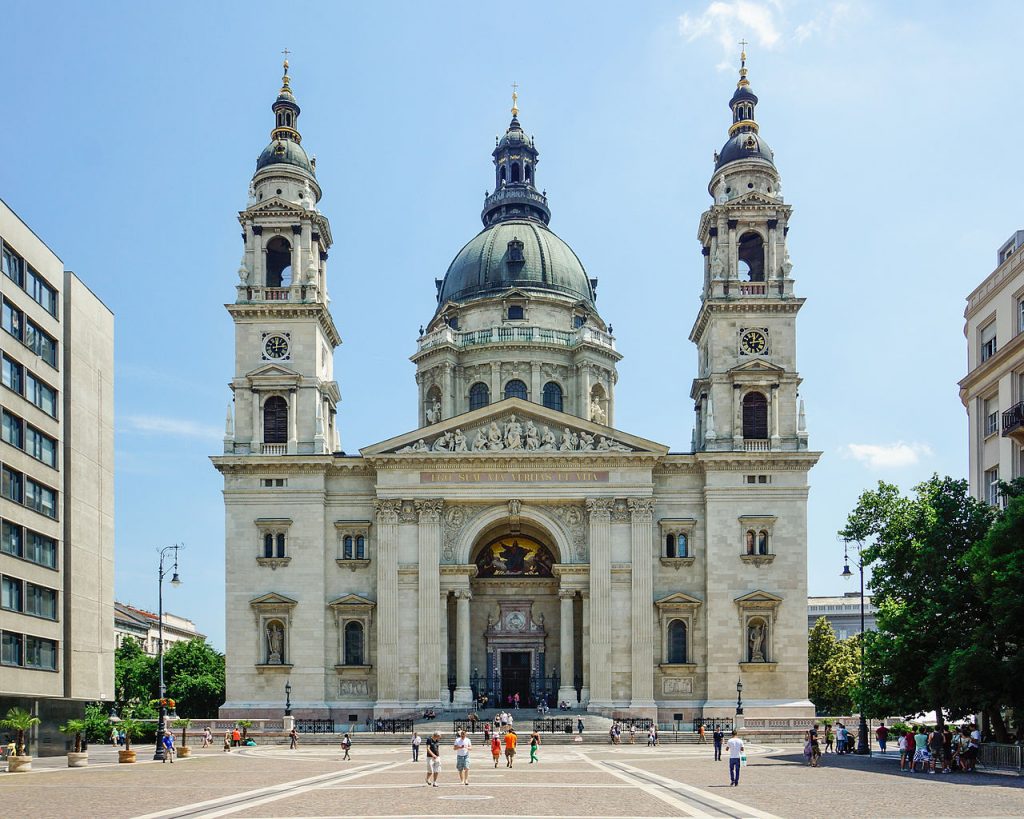
Photo by Adam Kliczek, http://zatrzymujeczas.pl from Wikimedia Commons
Like a lot of great citywide celebrations throughout the world, Budapest’s Millennium Celebration needed a substantial amount of land for the main festivities to be held. The government in Budapest, created the City Park, a massive open area covering about 1/2 a square mile (1.2 square kilometers) directly adjacent to the city center. This park showcases some of Budapest’s most notable sites.
Heroes’ Square is the focal point of the park, a large plaza that is surrounded by two of Budapest’s greatest art museums. The city park also contains Europe’s largest medicinal bath complex, the Széchenyi Baths. Like the Romans and Ottomans, the Hungarians make excellent use of the natural hot springs located below Budapest.
The baths are a fantastic example of Neoclassical Architecture with a regal exterior courtyard in the back of the building with three separate swimming pools. Within the City Park, there is a myriad of other notable sites such as a replica of a Transylvanian Castle, a Zoo, walking grounds, gardens, and several reflecting pools.

Photo by Marc Ryckaert from Wikimedia Commons
The entire park is connected with the center of Budapest via Andrássy Avenue, a perfectly straight street that is lined with fantastic works of architecture. Here you can see several different styles of buildings that represent the peak of 19th and early 20th century architecture, including Neoclassical, Neo-Baroque, and Neo-Renaissance.
One highlight is the Hungarian State Opera House, a neo-renaissance style building. The opera house, which rivals others in Paris and Vienna, is a fine example of the architectural splendor in Budapest during this time period. Although Budapest’s oldest metro line lies just beneath Andrássy Avenue, the walk from the city center to the City Park is well worth it to view some of these amazing buildings.
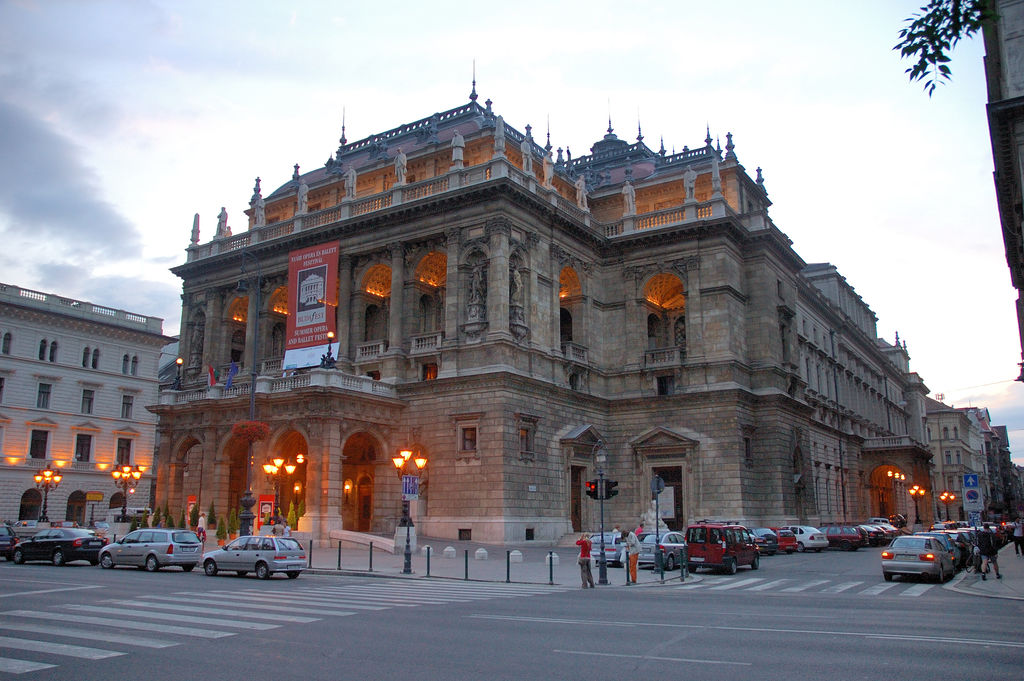
Photo by PDXdj from Wikimedia Commons
WWI and WWII
Around the time of its Millennium Celebration, Budapest was one of the finest cities in all of Europe. The building boom created some incredible works of architecture that were innovative and groundbreaking in their day. Unfortunately, Budapest was one of the hardest-hit cities on earth during the conflicts that plagued Europe in the first half of the 20th century.
During WWI, Hungary was part of the complex network of alliances that lead to most of the European Continent going to war. In the early 20th century Hungary was still paired with Austria forming the Austro-Hungarian Empire.
After the assassination of Archduke Ferdinand, the heir to the Austrian Throne, Hungary was quickly engulfed in the conflict in the Balkans which escalated to WWI. But luckily for Hungary, most of the front lines of the war were located in neighboring countries such as Austria, Serbia, and Romania.

Photo from the Bundesarchiv
During WWII, Hungary joined the Axis powers and declared war on the Soviet Union. After two years of intense fighting, Hungary wished to declare peace with the Allies. However, Nazi Germany did not approve of their peace treaty and subsequently occupied Hungary in an effort to strengthen its defenses on the Eastern Front against the Soviet Union. As the Soviets pushed their way west towards Germany, Budapest was a strategic point on the Danube River that was heavily defended by the Nazis.
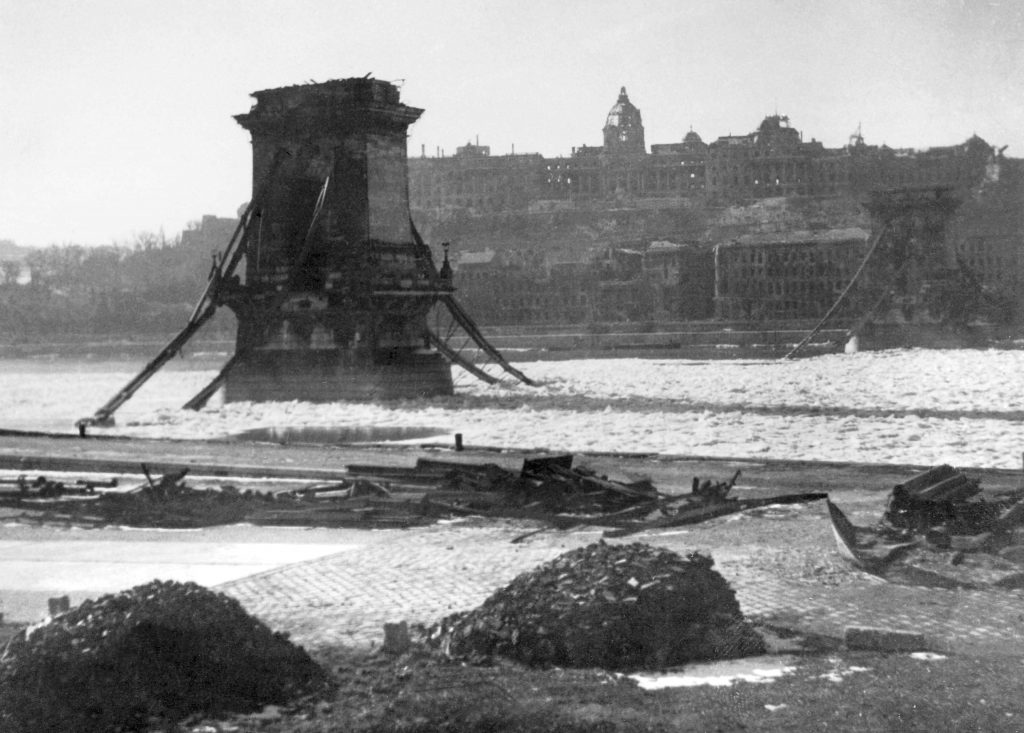
During the winter of 1944-1945, Budapest was besieged by the Soviet Union. The Battle for Budapest would be a large scale offensive which resulted in the near-complete destruction of many of Budapest’s most notable structures. Fighting was most intense in and around the Buda Castle. Much of Buda Castle, the Fisherman’s Bastion, and other historic sites were devastated in the battle.
As the Nazis retreated, they destroyed all of Budapest’s bridges in an effort to slow down the advancing Soviets. The decks of Széchenyi Bridge, one of the most notable sites in the city, were completed demolished but fortunately, the stone towers survived. The removal of bridges is a fairly common practice in warfare throughout history, but unfortunately, wartime strategy all too often takes precedent over human life, culture, and architecture.
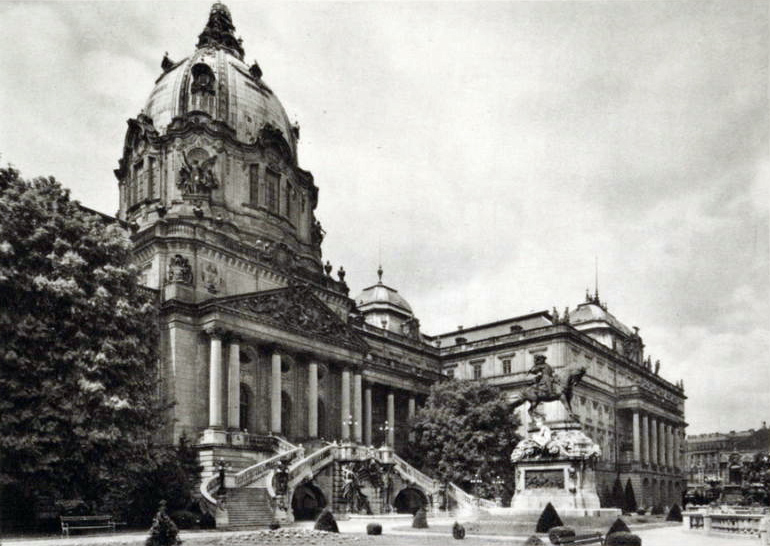
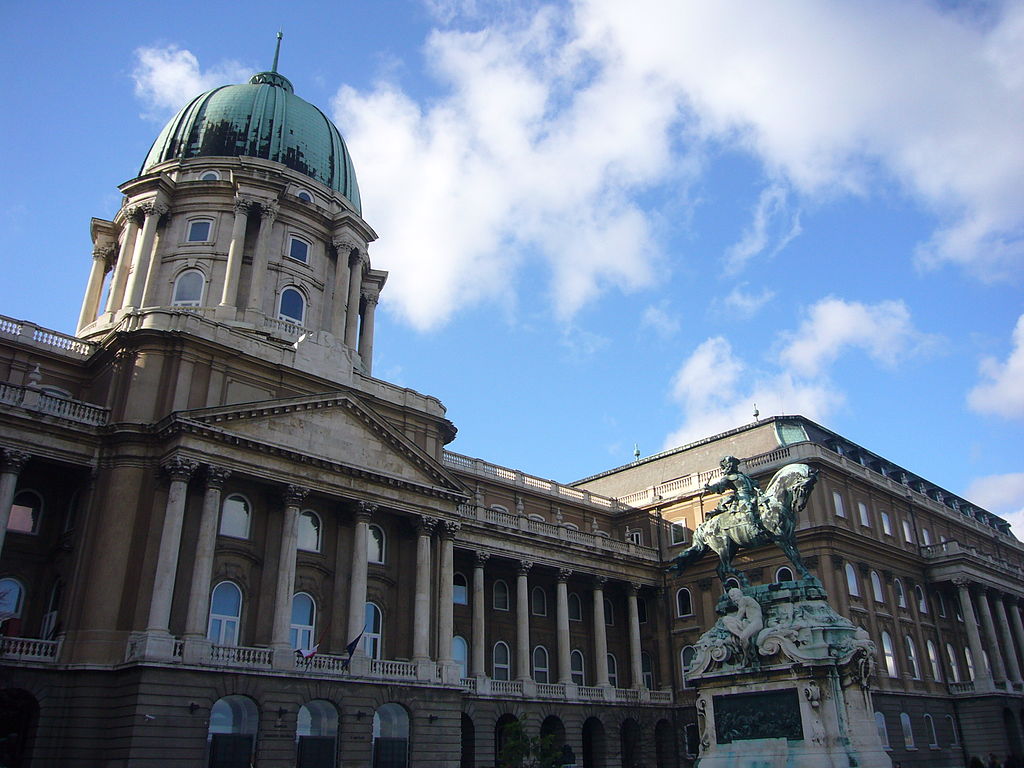
Photo from the United States Public Domain
(Right) the same view of Buda Castle as it is seen today. While still a very beautiful building much of the original architecture is lost.
Photo by Chad K from Wikimedia Commons
Period of Soviet Influence in Budapest
Following WWII, Hungary as well as much of Eastern Europe fell into the sphere of the Soviet Union. Although Hungary had its own government, a lot of the zoning, planning, and construction was regulated by Soviet rules and regulations.
Many Hungarians joke today that the government at this time was a form of Goulash Communism. Like they did in much of Eastern Europe, the Soviets built many large blocks of cheap affordable apartment housing. While necessary for economic growth and recovery which was very important after WWII, these apartment blocks are notoriously simple and boring and aren’t noteworthy buildings from an architectural sense.
Throughout the Soviet Era, many of the damaged buildings from the Battle of Budapest were repaired and rebuilt. This is largely why so much of Budapest looks so pristine today, as many of the building facades are relatively new. The Széchenyi Bridge was completely rebuilt and looks almost identical as it did pre-WWII.
Other important buildings like the Hungarian Parliament and the Fisherman’s Bastion were also brought back to their former glory. Unfortunately, due to financial and political reasons, Buda Castle was rebuilt but not nearly to the same caliber as it was in the 19th century. For those keeping track, this marks the fifth major rebuild of Buda Castle.
Many of the finer decorations such as the statues and stone carvings were not reconstructed during the rebuild. Although still an impressive building, the overall aesthetic of Buda Castle is modern and blocky compared to the elegant design that was there previously.

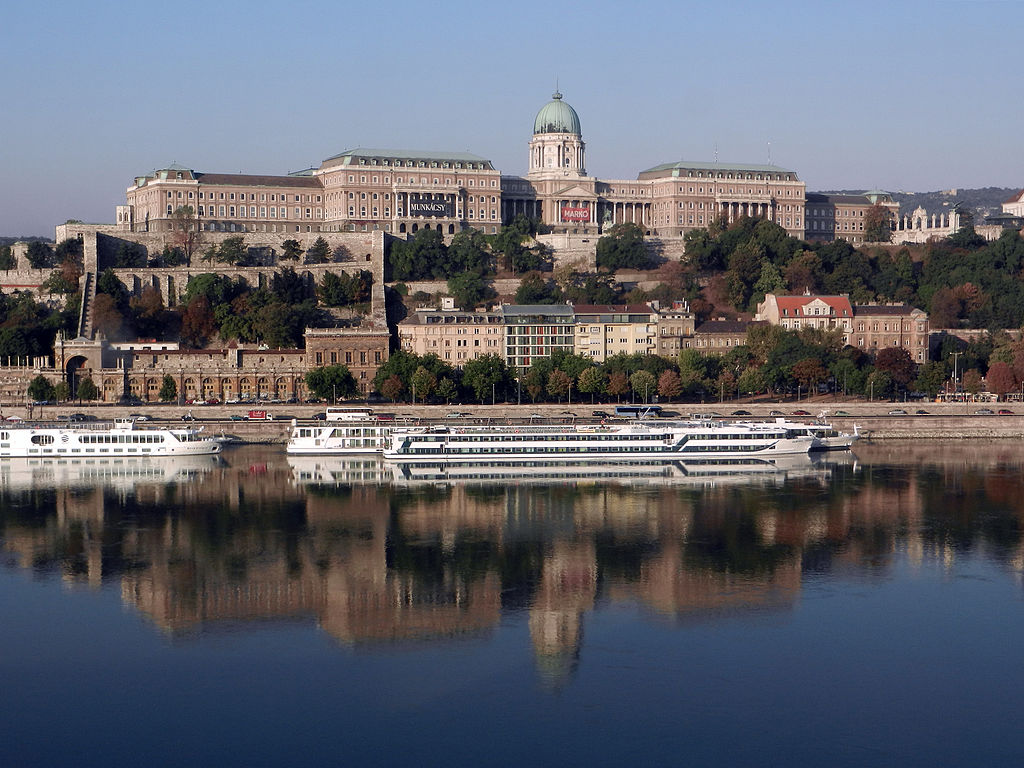
Photo from the Hungarian Public Domain
Right, the same view of Buda Castle as it is seen today. The general design of the castle remains unchanged, although much of the details and intricacies are no longer there.
Photo by Drayy from Wikimedia Commons
One great thing that the Soviets accomplished in this time period was the drastic improvements to Budapest’s Metro System. Dozens of new train stations, tram lines, and bus terminals were constructed. These new public transit systems help make Budapest easy to navigate in modern times, and also connect the city with the rest of Hungary and the rest of Europe.
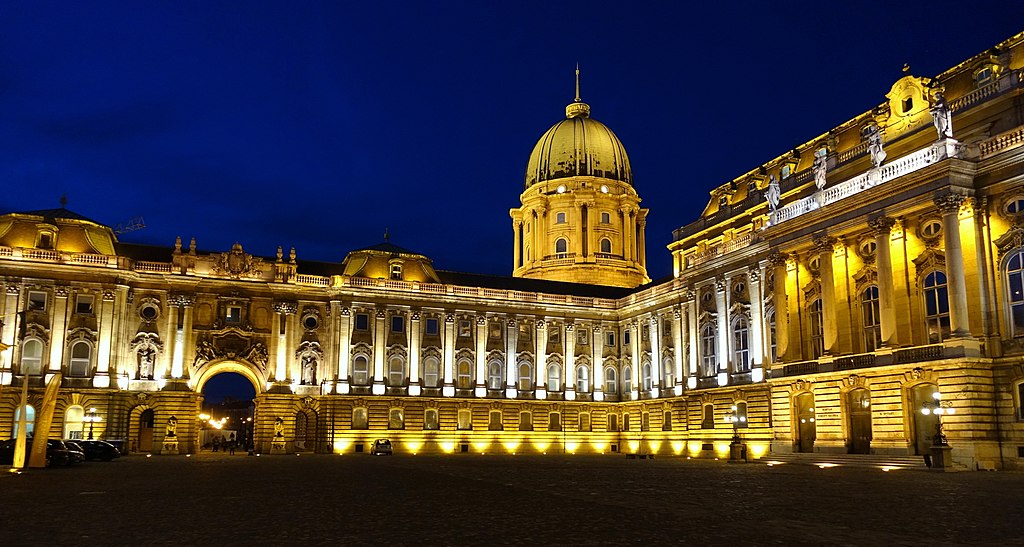
Photo by Thaler Tamas from Wikimedia Commons
Check out some of our related articles to learn more about architectural history!
Modern Architecture in Budapest: Independent Hungary
Following political protests that were taking place in Hungary and beyond against the Soviet Union, the government was granted more political and economic freedoms. This lead to the prosperous and independent nation of Hungary that exists today. Following this, Budapest gained more influence as a world capital. A new sense of freedom and prosperity overcame the city, mirroring some of those same feelings that came about during the time of the Millennium Celebration.

Photo by Fred Romero from Wikimedia Commons
Modern Budapest is home to some fantastic works of contemporary architecture. One of my favorites is the Bálna, a large multi-use building located just off the banks of the Danube. The building is a very modern design that to me replicates the fluid and flowing nature of the adjacent river. There are also several new crossing points over the Danube River which are modern and contrast a lot of the city’s historic architecture.

Photo by Tamás Mészöly from Wikimedia Commons
Conclusion
Budapest has one of the most complex histories of any European city. A diverse blending of cultures and rulers has left the city with many different styles of architecture. Several hardships and conflicts have left their mark on the buildings as well, but despite all of this Budapest remains one of the top destinations in Europe. Although it doesn’t have a large number of medieval sites when compared to other nearby cities such as Prague or Vienna, Budapest has some of the finest 19th Century architecture anywhere.
Architects often through the term, “neo” in front of various styles to identify that certain buildings were built after the historical timeframe that they are associated with. For instance, Neo-Gothic is Gothic architecture built well after the 14th Century. So I like to joke that Budapest is the world’s best, Neo-City. Similar to architecture in The United States, much of the significant buildings date from the past 200 years. Therefore, Budapest has fantastic amounts of Neoclassical, Neo-Gothic, Neo-Renaissance, and Neo-Baroque architecture.
Regardless of your favorite style or time period, Budapest has something for everyone. Budapest may not get all of the recognition of Prague or Vienna, but to me, it is every bit as important architecturally and should be strongly considered as a destination for any architecture lover.
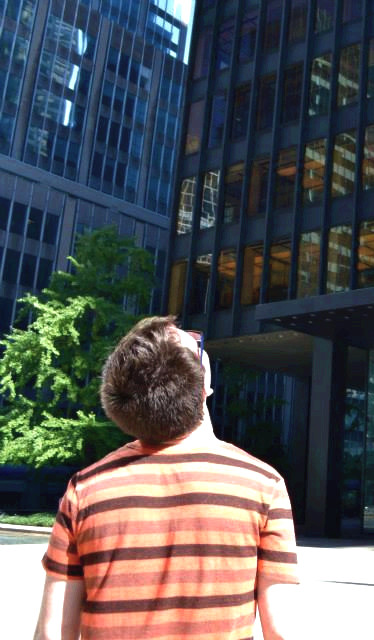
- About the Author
- Rob Carney, the founder and lead writer for Architecture of Cities has been studying the history of architecture for over 15 years.
- He is an avid traveler and photographer, and he is passionate about buildings and building history.
- Rob has a B.S. and a Master’s degree in Architecture and has worked as an architect and engineer in the Boston area for 10 years.
Like Architecture of Cities? Sign up for our mailing list to get updates on our latest articles and other information related to Architectural History.

